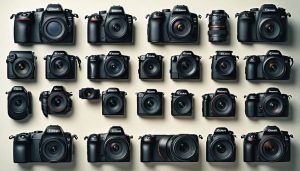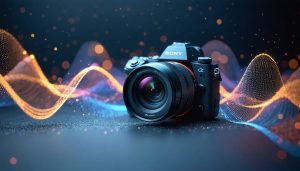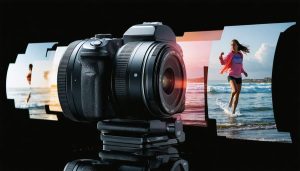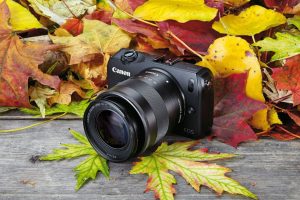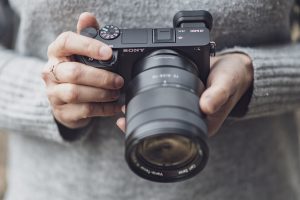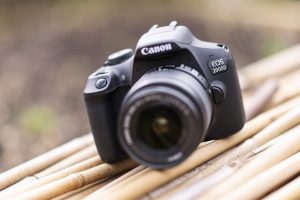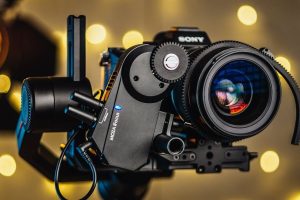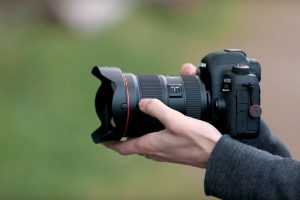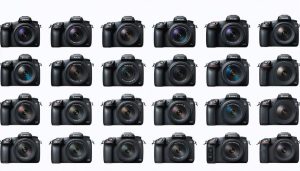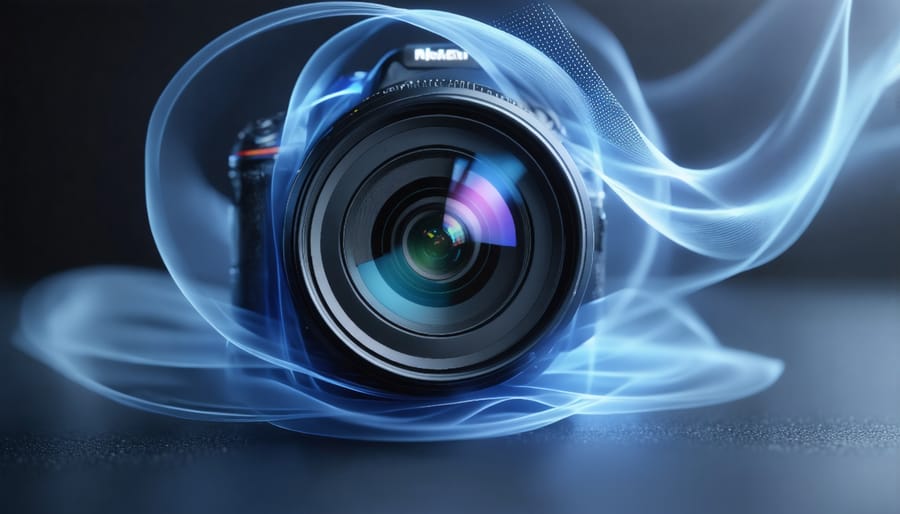
Dynamic vision sensors (DVS) are revolutionizing how we capture motion, operating fundamentally differently from traditional cameras by detecting only changes in brightness at the pixel level. Unlike conventional sensors that capture complete frames at fixed intervals, these bio-inspired devices respond to luminance changes with microsecond precision, generating sparse, event-based data that mirrors how our human retinas process visual information.
This breakthrough in sensing technology addresses the limitations of traditional cameras, particularly in high-speed and high-dynamic-range scenarios. When a conventional camera might suffer from motion blur or overexposure, DVS continues to capture precise temporal information about moving objects, making them invaluable for applications ranging from autonomous vehicles to high-speed robotics.
The real power of dynamic vision sensors lies in their ability to reduce data redundancy while maintaining exceptional temporal resolution. By only recording changes in the visual scene, these sensors can process visual information up to 1000 times faster than conventional cameras, while consuming significantly less power and storage space. This efficiency opens up new possibilities in real-time machine vision, neuromorphic computing, and advanced motion tracking systems.
As we delve deeper into the capabilities and applications of DVS technology, we’ll explore how these sensors are reshaping our approach to visual data processing and enabling innovations that were previously impossible with traditional imaging systems.
Understanding Dynamic Vision Sensors
How DVS Technology Works
Unlike traditional image sensors that capture entire frames at fixed intervals, DVS technology operates on a fundamentally different principle: event-based vision. Each pixel in a DVS works independently, responding only to changes in brightness in its field of view. When a pixel detects a significant change in light intensity, it immediately sends out a signal, or “event,” containing its location and whether the change was positive or negative.
Think of it like having millions of tiny light detectors that only wake up when something interesting happens in their view. This approach offers several advantages: incredibly fast response times (often in microseconds), high dynamic range, and minimal data output since only changing pixels generate signals.
The magic happens at the pixel level, where specialized circuits continuously monitor light levels. When a change exceeds a preset threshold, the pixel generates an event asynchronously – meaning it doesn’t wait for a global shutter or timing signal. This makes DVS particularly effective at capturing fast-moving subjects and operating in challenging lighting conditions where conventional cameras might struggle.
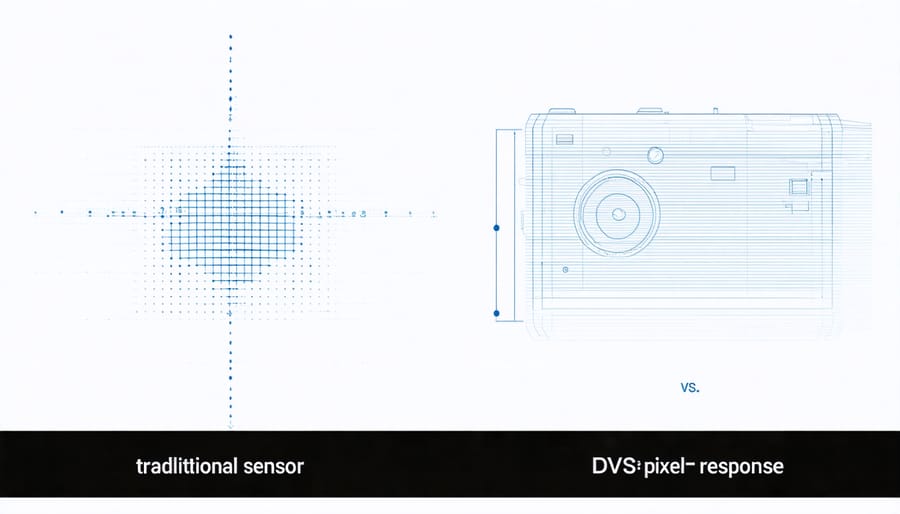
Advantages Over Traditional Sensors
Dynamic vision sensors offer several compelling advantages over traditional image sensors, making them particularly valuable for specific photography and imaging applications. Unlike conventional sensors that capture entire frames at fixed intervals, DVS respond only to changes in brightness, mimicking how our human eyes process visual information.
This unique approach leads to remarkable benefits in high-speed photography and motion tracking. While traditional sensors might miss fast-moving subjects due to motion blur or limited frame rates, DVS can detect changes in microseconds, ensuring crystal-clear capture of rapid movements. They’re also incredibly efficient with data processing, as they only transmit information about what’s changed in the scene rather than complete frames.
Another significant advantage is their impressive dynamic range. Where traditional sensors might struggle with extreme lighting conditions, DVS can handle both very bright and very dark areas within the same scene effectively. This makes them particularly useful in challenging lighting situations, such as shooting sports events that transition from sunlight to shadow.
Power consumption is also notably lower with DVS, as they’re not constantly capturing and processing full frames. This efficiency makes them ideal for battery-powered devices and long-term monitoring applications.
The Lens-Sensor Relationship

Optical Properties and Their Impact
The optical properties of lenses play a crucial role in how dynamic vision sensors capture and process visual information. Unlike traditional cameras, DVS systems are particularly sensitive to how light reaches the sensor surface, making lens selection a critical factor in their performance.
Focal length significantly impacts the DVS’s ability to detect motion. Shorter focal lengths provide a wider field of view, allowing the sensor to capture more movement in the scene, but may reduce sensitivity to subtle changes at greater distances. Longer focal lengths, while limiting the field of view, excel at detecting minute movements in distant objects, making them ideal for applications like sports analysis or wildlife monitoring.
Aperture settings affect both light gathering and motion detection sensitivity. Wider apertures (lower f-numbers) allow more light to reach the sensor, which can improve performance in low-light conditions. However, they also reduce depth of field, potentially limiting the range where motion detection remains effective. Narrower apertures provide greater depth of field but may require additional illumination to maintain optimal sensitivity.
Lens coating quality directly influences DVS performance by controlling light transmission and reducing unwanted reflections. Anti-reflective coatings are particularly important as they minimize ghost images and flare, which could trigger false event detections. High-quality coatings also help maintain contrast and clarity, ensuring accurate motion detection across varying lighting conditions.
For optimal results, photographers should consider lenses specifically designed or tested for DVS applications, as these often feature coating formulations and optical designs that complement the unique characteristics of event-based vision sensors.
Lens Quality Factors
When working with dynamic vision sensors (DVS), understanding how lens quality affects sensor performance is crucial for achieving optimal results. The lens serves as the gateway for light reaching the sensor, and its characteristics directly impact the DVS’s ability to detect and process changes in the scene.
Several key factors determine how well a lens complements a dynamic vision sensor. First, the lens’s optical clarity and transmission efficiency influence the sensor’s ability to detect subtle brightness changes. High-quality glass elements with superior coatings ensure that more light reaches the sensor, resulting in better temporal contrast detection.
Distortion and chromatic aberration also play significant roles. Since DVS systems rely on precise detection of intensity changes, any optical distortions can lead to false events or missed changes. Premium lenses with well-controlled distortion help maintain accurate spatial relationships across the entire field of view.
The lens’s focusing speed and precision are particularly important for DVS applications. Unlike traditional cameras, dynamic vision sensors need to maintain sharp focus continuously to detect changes effectively. Auto-focus systems must be fast and accurate to keep up with rapid scene changes.
Another critical factor is the lens’s maximum aperture. Faster lenses (those with wider maximum apertures) allow more light to reach the sensor, enabling better performance in challenging lighting conditions. However, they must maintain excellent sharpness even when used wide open.
Resolution matching between the lens and sensor is essential too. A lens must resolve detail at least as finely as the sensor’s pixel pitch to avoid limiting the system’s overall capabilities. This becomes especially important in high-speed applications where precise edge detection is crucial.
Real-World Applications
High-Speed Photography
Dynamic vision sensors have revolutionized high-speed photography, particularly in sports and action photography where split-second moments make all the difference. Unlike traditional cameras that might miss crucial moments between frames, DVS technology captures every minute change in the scene as it happens.
Consider a baseball player’s swing: traditional cameras might capture 3-4 frames of the bat connecting with the ball, but a DVS-equipped camera can record hundreds of precise data points throughout the entire motion. This capability has become invaluable for sports analysts and coaches who need to study athletic performance in microscopic detail.
In motorsports, DVS cameras excel at capturing the exact moment when a race car crosses the finish line or when two vehicles make contact. The sensor’s ability to detect and record only changes in the scene means you’re not wasting storage space on redundant information between key moments of action.
Action photographers particularly appreciate DVS technology for freezing fast-moving subjects without motion blur. Whether it’s a hummingbird’s wings in mid-flutter or a motorcycle mid-jump, the sensor’s microsecond-level responsiveness ensures crystal-clear images of even the fastest subjects.
Professional photographers are increasingly incorporating DVS cameras into their high-speed photography setups, especially for technical applications like analyzing golf swings or perfecting dance movements where precise timing is crucial.
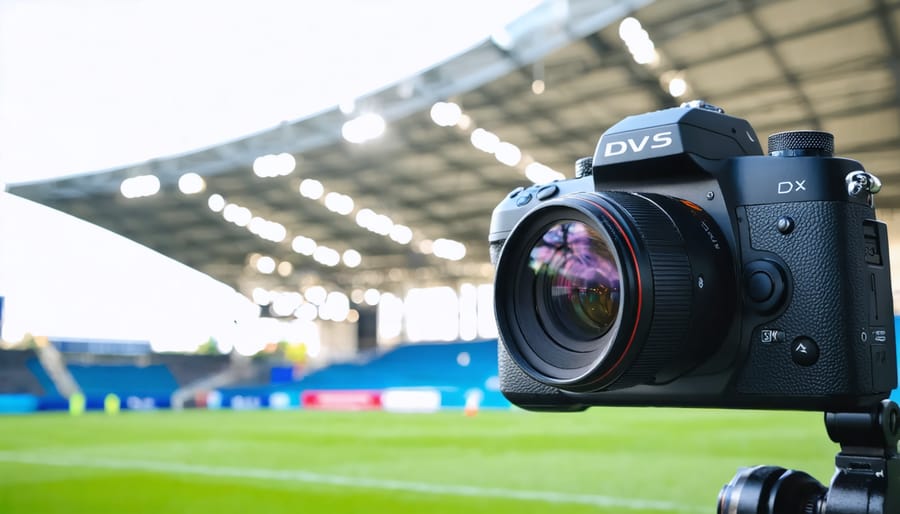
Low-Light Performance
Dynamic vision sensors truly shine in low-light conditions, offering remarkable advantages over traditional image sensors. Unlike conventional cameras that struggle with noise and loss of detail in dim environments, DVS technology responds to changes in brightness with incredible sensitivity, making it particularly effective for night photography and challenging lighting scenarios.
What makes DVS exceptional in low light is its event-based operation. Instead of capturing entire frames at fixed intervals, these sensors detect and process only the changes in light intensity at each pixel. This selective approach results in significantly reduced noise levels and better signal-to-noise ratios compared to traditional sensors, even in near-darkness.
Photographers working in demanding conditions will appreciate how DVS handles high-contrast scenes. Whether you’re shooting city streets at night or indoor events with mixed lighting, the sensor adapts quickly to varying light levels within the same scene. This dynamic adaptation means you can capture details in both shadows and highlights without the typical noise or artifacts that plague conventional sensors in similar situations.
The practical implications are impressive: clearer night photography, better performance in twilight conditions, and more reliable results in venues with challenging lighting. For instance, concert photographers can capture crisp images of performers moving through dramatic lighting changes, while surveillance applications benefit from improved visibility in low-light environments.
However, it’s worth noting that the way DVS handles low light differs from traditional night photography techniques, requiring some adjustment in shooting approach and post-processing workflows.
Motion Tracking
Dynamic vision sensors are revolutionizing wildlife and event photography, offering photographers unprecedented capabilities in motion tracking. Unlike traditional cameras that capture static frames, DVS technology responds to movement in real-time, making it ideal for capturing fast-moving subjects in their natural environment.
Wildlife photographers have found DVS particularly valuable when photographing birds in flight or predators on the hunt. The sensor’s ability to detect and track minute changes in motion helps maintain sharp focus on erratic movements, resulting in crystal-clear action shots that might otherwise be impossible to capture. For instance, photographing a kingfisher diving for fish becomes more achievable as the sensor tracks both the bird’s descent and the water splash simultaneously.
In event photography, modern sensor technology excels at tracking multiple subjects across dynamic scenes. Wedding photographers can now better capture spontaneous moments like the bouquet toss or first dance, with the sensor maintaining focus on key subjects even in challenging lighting conditions.
The technology’s low latency and high temporal resolution also make it excellent for sports photography, where split-second timing is crucial. Whether it’s a tennis serve or a soccer goal, DVS ensures that decisive moments are captured with precision, eliminating the motion blur that often plagues traditional sensor systems.
Future Implications
Emerging Lens Technologies
As dynamic vision sensors continue to evolve alongside other emerging sensor technologies, lens manufacturers are developing specialized optics to maximize their unique capabilities. Traditional camera lenses weren’t designed with the rapid-fire, event-based nature of DVS in mind, leading to potential motion blur and timing inconsistencies.
New DVS-optimized lenses feature ultra-fast transmission rates and minimal distortion, ensuring that every millisecond of motion is captured clearly. Some manufacturers have introduced adaptive optical elements that can adjust their properties in real-time, synchronizing perfectly with the sensor’s detection of changes in the scene.
Perhaps the most exciting development is the introduction of “temporal focus” technology, which allows the lens to maintain sharp focus across multiple depth planes simultaneously, particularly useful for high-speed tracking applications. These lenses incorporate specialized coatings that reduce internal reflections that could trigger false events in DVS systems.
Companies like RheoOptics and DynamicLens are pioneering modular lens systems specifically for DVS cameras, offering photographers the flexibility to customize their setup based on specific application needs, whether it’s sports photography, industrial monitoring, or scientific research.
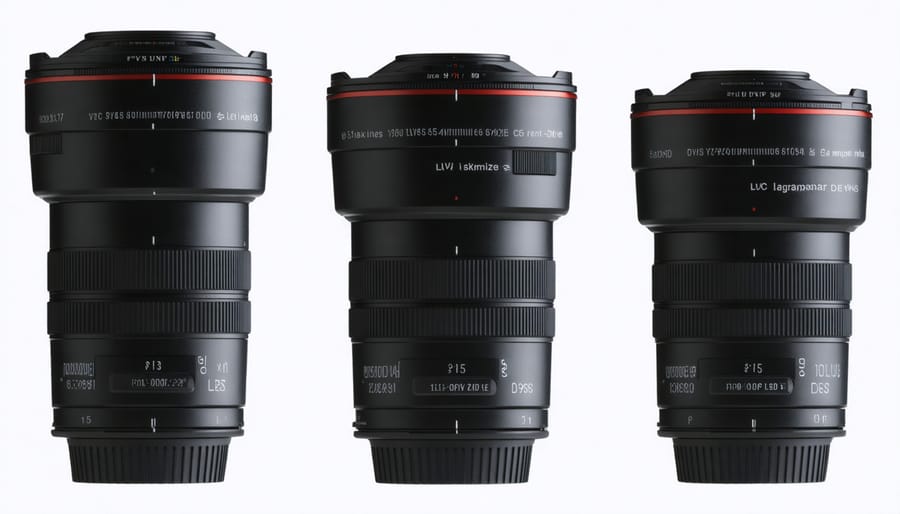
Integration Possibilities
Dynamic vision sensors are proving to be remarkably adaptable, seamlessly integrating with various imaging systems and platforms. From modern compact camera systems to sophisticated industrial vision setups, DVS technology is finding its place across the imaging spectrum.
The beauty of DVS lies in its compatibility with existing lens mounts and standards. Whether you’re using traditional DSLR lenses or specialized industrial optics, most DVS modules can be adapted to work with your current gear. This flexibility makes it easier for photographers and developers to experiment with the technology without completely overhauling their equipment.
Looking ahead, we’re seeing exciting possibilities in hybrid systems that combine conventional sensors with DVS technology. Imagine capturing both traditional high-resolution stills and ultra-fast motion events simultaneously – this is already becoming a reality in some research labs and early commercial applications.
The integration potential extends beyond photography into areas like autonomous vehicles, sports analysis, and scientific research. Many manufacturers are developing standardized interfaces and software development kits (SDKs) that make it easier for creators to incorporate DVS technology into their projects, whether they’re building a high-speed motion capture system or developing the next breakthrough in computational photography.
Dynamic vision sensors represent a revolutionary step forward in imaging technology, offering photographers new possibilities for capturing motion and rapid events with unprecedented precision. Throughout this exploration, we’ve seen how these sensors fundamentally differ from traditional cameras by recording changes in brightness rather than complete frames, resulting in reduced data processing and exceptional temporal resolution.
For photographers considering incorporating DVS technology into their workflow, several key takeaways emerge. First, these sensors excel in high-speed photography scenarios where traditional cameras might struggle, such as sports photography or capturing fast-moving subjects. The minimal motion blur and reduced data overhead make them particularly valuable for scenarios requiring quick response times and efficient processing.
However, it’s important to remember that DVS technology comes with its own learning curve. Understanding how to work with event-based data and adapting your shooting techniques may require some adjustment. The investment in time and resources can be well worth it, especially for photographers specializing in high-speed or motion-heavy subjects.
Looking ahead, we can expect to see more widespread adoption of DVS technology as manufacturers continue to refine and develop these sensors. Whether you’re a sports photographer, a wildlife enthusiast, or simply interested in pushing the boundaries of what’s possible in photography, keeping informed about DVS developments could open up exciting new creative possibilities in your work.
Remember that while technology evolves, the fundamental principles of good photography remain constant. DVS technology should be viewed as another tool in your creative arsenal, rather than a replacement for traditional photography methods.

